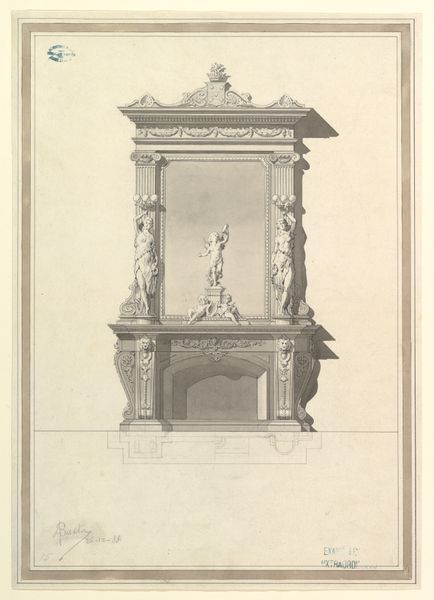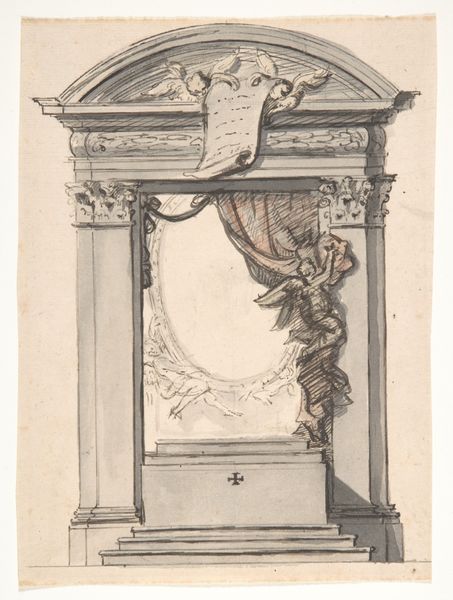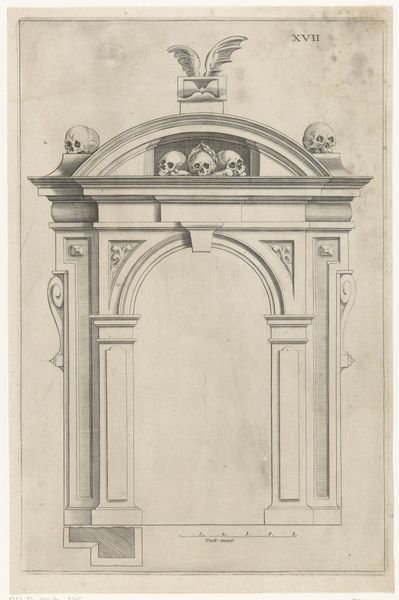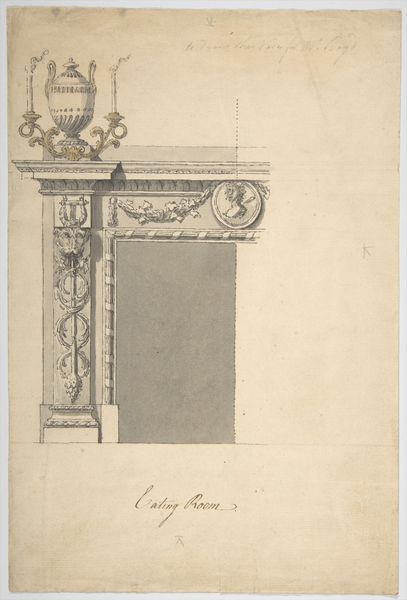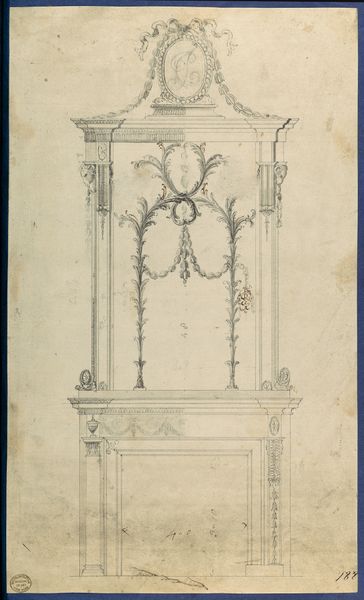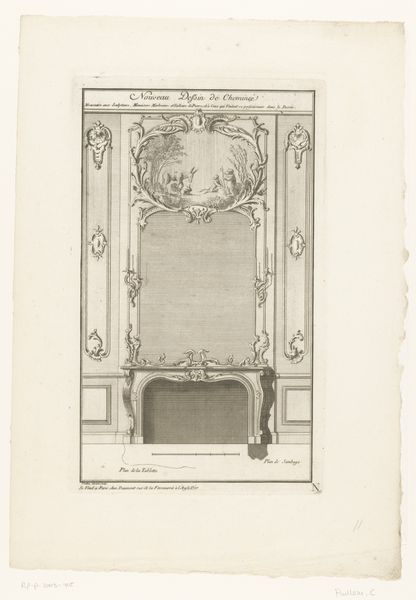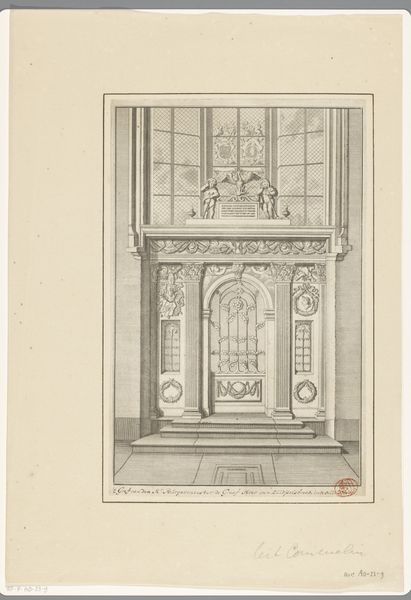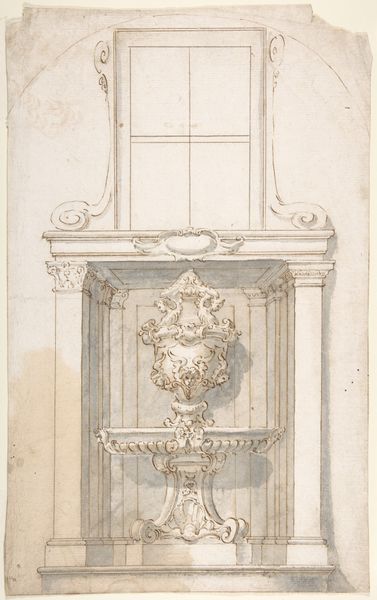
Dimensions: sheet: 10 3/4 x 6 5/16 in. (27.3 x 16 cm)
Copyright: Public Domain
Editor: This is "Design for a Chimney Piece" from the 18th century. It's an etching and print drawing currently residing at the Met. There's such careful linework showing the geometric forms of Neoclassicism. What’s striking is how the austere architectural design is juxtaposed with decorative elements. How do you read this work? Curator: Well, I see a conversation, or rather, a polite debate between order and ornamentation, wouldn’t you say? This design whispers of those 18th-century salons, alive with intellectual sparring. Imagine the crackling fire, illuminating these meticulously planned curves and flourishes. The Neoclassical love for clean lines is definitely here, but softened, humanized even, by those delicate, almost playful, floral details. I wonder, was the architect yearning for a bit of whimsy, a rebellion against pure reason? What do you make of the…stage? I keep thinking about the mantel as a stage! Editor: It’s an interesting thought, the mantel as stage, that everything above it is meant to draw attention toward…something. Perhaps a performance, or family gathering, the focal point for living? It seems counterintuitive that they would decorate so much without calling attention to what goes *inside* the firebox. I suppose the lines evoke order. Curator: Ah, but perhaps the "stage" is the performance! A celebration of design, of status, of domesticity itself. And think about it - the darkness inside could represent the unknown, the chaotic element tamed and framed by reason and beauty. So much intention here, hidden beneath layers of aesthetic. You could dive in, what is this fire, and who keeps it lit. Or if anyone will. Is this meant to represent hope or warning? Editor: That is so interesting to consider. I was stuck thinking about it simply as architectural blueprint, but there is something more intimate at play. I will definitely view the period rooms differently now. Curator: Exactly. Always dig below the surface; art is a treasure hunt. And sometimes, the treasure is simply a new way of seeing.
Comments
No comments
Be the first to comment and join the conversation on the ultimate creative platform.
